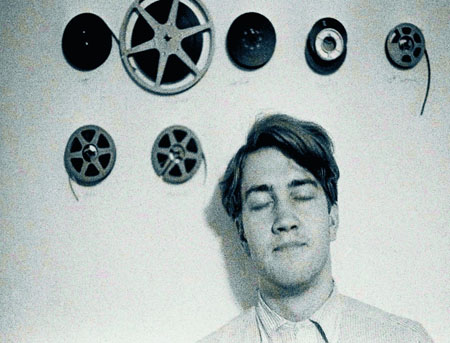
“PORTRAIT OF THE
ARTIST AS A YOUNG AND OLD MANâ€
By Raymond Benson
David
Lynch is today’s foremost surrealist. In many ways, he has taken up the mantle
begun by those artists of the 1920s who attempted to present in tangible,
visual forms the juxtapositions, bizarre logic, and beauty/horror of dreams.
Salvador DalÃ, Luis Buñuel, Man Ray,
Germaine Dulac, René Magritte—to name a few.
Most
people know Lynch from his films, but as this thoughtful and insightful
documentary reveals, he is and has always been primarily a painter. Lynch began
his career in the “art life†studying and practicing fine art… and he sort of
fell into filmmaking along the way. Even today, despite his recent foray back
into television with Twin Peaks—The
Return on Showtime, Lynch spends most of his time in his home studio
drinking coffee, smoking cigarettes, and painting.
The
film is narrated by Lynch himself as he takes the audience through moments of
his early life growing up first in the state of Montana, then Idaho,
Washington, and finally Virginia. After high school, Lynch briefly attended the
School of the Museum of Fine Arts in Boston, but he dropped out because he
wasn’t inspired. His friend Jack Fisk (future production designer on several of
Lynch’s films and future wife of actress Sissy Spacek) got the artist to join
him at the Pennsylvania Academy of Fine Arts in Philadelphia, and that’s where
things started to take off.
The
documentary might be disappointing to Lynch fans in that it covers only his
childhood and twenties…just up to the point where he makes Eraserhead (which took four years in the mid-seventies and was
finally released in 1977). Other documentaries, such as 1997’s Pretty as a Picture, might delve into
Lynch’s more well-known feature work. However, for this unique documentary, Lynch
has provided never-before-seen home movies and photographs of his childhood,
family, and artwork. As these biographical stories are related in chronological
order, we see Lynch at work in his studio… drinking coffee, smoking, and
painting. In fact, we get a very good look at a great deal of his artwork. And
if you think Lynch’s movies are strange, wait until you see his paintings!
Stylistically, they are three-dimensional multimedia pieces. A canvas might
contain found objects, gobs of thick paint, wood and metal, odd figures and
creatures, and lettering. Fascinating stuff.

Lynch
explains how he got the idea for a “painting that moved,†which resulted in his
first film, Six Men Getting Sick (Six
Times) (1967), and then moved on to make other surrealistic, avant-garde
short films such as The Alphabet and The Grandmother. These efforts led to
his moving his family in 1971 (he had gotten married in ’67 and had a child in
’68) to Los Angeles so that he could study at the AFI Conservatory. It was
there that he began his first feature film, the iconic independent
horror-comedy, Eraserhead.
The
takeaway from the documentary is that Lynch evolved as an artist whenever there
were obstacles to overcome. He developed a knack for taking a bad situation and
turning it into something productive. We see this occurring repeatedly in his
tales of journeying from childhood to becoming an adult.
The
Criterion Collection presents the film in the company’s usual top-notch
excellence. The video quality of the Blu-ray High Definition digital master is
gorgeous—you can see every wrinkle of Lynch’s weathered face, as well as the
fine lines of his silver-white hair. Sound—always important in a Lynch film and
just as vital here—is a 5.1 surround DTS-HD Master Audio. The package is short
on supplements, though. Along with the theatrical trailer, an interview with
one of the directors, Jon Nguyen, illustrates the working process the
filmmakers had with Lynch. An essay by critic Dennis Lim appears in the
booklet.
At
only 88 minutes, David Lynch—The Art Life
is a short but worthwhile look into the mind—and dreams—of one of today’s
most important visual artists.
CLICK HERE TO ORDER FROM AMAZON